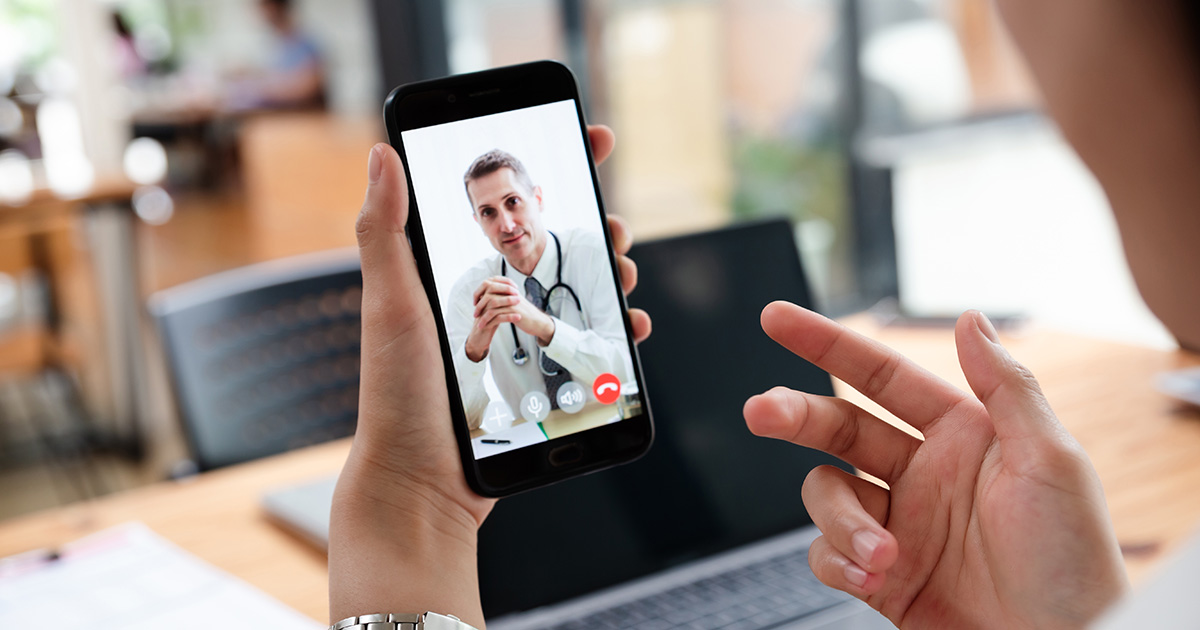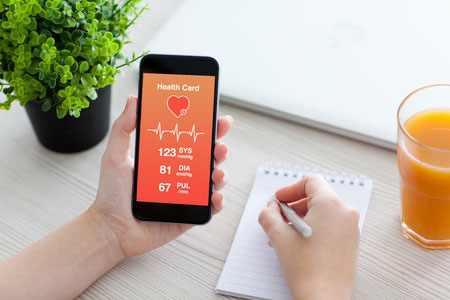What is telehealth?
Telehealth is changing medicine – and patient care – as we know it.
But what exactly is telehealth?
Telehealth is a broad term that includes all types of remotely-performed healthcare services. Enabled by ever-evolving technology, this rapidly emerging category of healthcare includes virtual visits; remote diagnoses, evaluation and patient monitoring; online healthcare education; and more. Under this umbrella also fall the additional categories of telecare and telemedicine, as well as certain types of healthcare administration.
In this article, we’ll take a look at:
- Different usages of telehealth
- How telehealth is being used to transform healthcare for the better
- Potential drawbacks of telehealth
Finally, we’ll take a look at how private practices can take a first step into telehealth by relying on remote administration to cut down on costs, expedite care, and provide a better patient experience.
Uses of telehealth
Because telehealth is such a broad-reaching term, it covers a lot of ground. And you can be sure that as you’re reading this, new types of telehealth are being innovated and developed–strategies that have yet to come to market.
That being said, there are a handful of ways that telehealth is being widely applied today:
Virtual visits
As anyone who’s ever scheduled an appointment months in advance, or waited for two hours in a waiting room, or gone to see a doctor only to be rushed out of the office after a few minutes can tell you: doctor’s appointments are not always ideal forms of care.
In some cases, face-to-face visits are necessary–such as when a physician needs to perform a physical exam on a patient. But in other cases, a virtual visit– under the umbrella of telemedicine–may be sufficient.
This kind of video call may involve a routine check-up, or it may even include an evaluation and diagnosis. Though virtual visits aren’t typically covered by health insurance, they can potentially amount to even less than an out-of-pocket cost because of their time- and cost-effectiveness.
Ongoing care for patients with chronic conditions
Remote patient monitoring (RPM)–which falls under the category of telecare–uses specific kinds of technologies to collect data from patients right from their homes and safely transmit that data to providers. Types of data that may be collected can include vital signs (like body temperature and pulse rate), weight, blood pressure, blood sugar, blood oxygen levels, heart rate, and more.
RPM can be especially helpful for patients with chronic issues…such as diabetes or heart disease. Not only does remote monitoring help them to take more control of their own health, but if critical signals are picked up, they can more quickly respond to and receive the care they need.
Remote medication prescription
Remote prescription typically follows a virtual visit, although there are limitations to the kind of drug physicians can prescribe (such as painkillers). Like a virtual visit, remote prescription can be especially beneficial to patients who may have barriers to visiting their physicians directly.
Remote education and administration
Telehealth doesn’t necessarily relate directly to patient-provider interaction; it can also refer to the administrative aspect of healthcare, as well as ongoing education for healthcare professionals. Communications involving patient data fall under the category of telehealth, as well as a license renewal program for a physician.
Benefits of telehealth
Just as remote technology has made shopping, communicating, and working faster and more efficient, so too has remote technology transformed healthcare.
Telehealth has a potentially endless number of benefits–especially as new technologies emerge. In the meanwhile, here are a few of the core benefits:
Accessibility
Virtual visits offer a new level of accessibility to high-quality healthcare for those living in remote, hard-to-reach places. Individuals living in rural communities, for example, have historically faced very limited access to proper healthcare. With continuing closure of hospitals in rural areas, this limited access has verged on crisis.
While virtual visits cannot offer clinical care, they could help residents living in these areas manage their own health, be diagnosed, and receive prescriptions. Virtual visits also increase much-needed accessibility for patients who have difficulty leaving their homes or visiting an office, clinic, or hospital.
Efficiency
Telehealth can help to expedite both clinical and administrative processes in the healthcare industry. Virtual visits and ongoing care for the chronically sick lighten patient load in healthcare facilities, and are far more cost- and time-effective for both parties. Likewise, taking an online course for license renewal or certification is far more convenient, and potentially more effective, for healthcare professionals.
Improved care
As mentioned above, remote patient monitoring can significantly increase the quality of care for critically ill and chronically ill patients by sending critical signals to providers on an ongoing basis. In fact, one study showed that patients with heart failure who participated in remote patient monitoring saw lower hospitalization costs.
Telehealth is also giving rise to new technologies such as wearable healthcare that can help individuals monitor their own health–and improve their overall outcomes.
Potential drawbacks of telehealth
Like most innovative new developments and technologies, telehealth also comes with certain drawbacks.
To remain HIPAA-compliant and secure (protecting private patient information), any services and products in telehealth must meet specific requirements. Data breaches are unfortunately very common in healthcare, and any professional involved in telehealth must take utmost precautions to prevent dangerous leaks of information.
Secondly, although telehealth increases accessibility and efficiency, it also runs the risk of de-personalizing healthcare. Having a face-to-face relationship with a provider is an important part of healthcare for most, and virtual visits may not offer the same kind of personability and connection – especially for patients in critical condition. That being said, telehealth can also increase the level of communication with a provider by making appointments–as well as general communication–easier and more frequent.
Free Download: 5 Tips to Providing Remote Care
Final thoughts: How to incorporate telehealth into your private practice
You may be far from offering your patients virtual visits and remote prescriptions, but you still want to move forward in optimizing your practice’s technology. And who knows? Maybe someday, you will want to offer services that allow you to communicate with patients across the state, country, or world.
That being said, first steps to becoming a telehealth-friendly practice include integrating an electronic medical records (EMR) system into your practice and to begin using electronic intake forms, online scheduling, and a patient portal. A comprehensive electronic platform that offers you these features helps you and your patients accustomed to remote administrative processes, which may eventually segue into remote care.
intakeQ is an electronic paperwork platform that can help you with all of the above and more by providing:
- A HIPAA-compliant telehealth platform – giving you the power to host private video calls with patients via their patient portal
- Integration with Zoom video calls – giving you a second option for telehealth appointments
- Electronic intake forms – HIPAA-compliant, easy to use, and customizable, you can send (and receive) pre-appointment questionnaires, release forms, and more to patients before their appointment
- Online booking widget – giving patients the ability to schedule, check, and cancel upcoming appointments right from their smartphones
- Messaging portal – providing a place for patient and provider to communicate efficiently and effectively
- Appointment reminders–reminders are sent automatically via text message, reducing no-shows
- Patient notes and profile – gives providers the ability to quickly and conveniently access a patient’s information, including appointment notes, progress updates, and upcoming appointments
To give intakeQ a try for free, click here.






